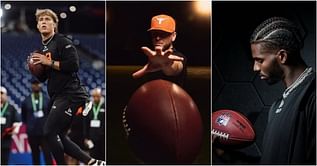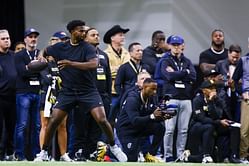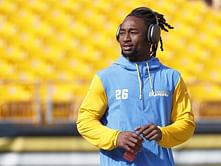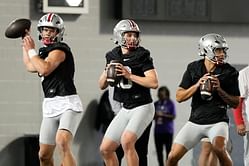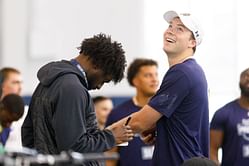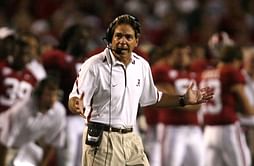
Alabama's adoption of an elephant as its mascot stems from a historical connection dating back to the 1930s. This narrative originated with Everett Strupper, a sportswriter for the Atlanta Journal, who described the Alabama football team as resembling a "herd of elephants" during a game.
The comparison resonated with fans due to the team's formidable size and strength, leading to the elephant becoming an unofficial emblem of the team. Over time, the university officially embraced this mascot concept, culminating in the creation of “Big Al,” who currently serves as the official costumed elephant mascot at games.
Alabama Mascot "Big AI"
During the game, as the first quarter drew to a close, an interesting incident occurred. The earth seemed to quiver, accompanied by a growing rumble. An enthusiastic fan in the stands exclaimed, "Hold your horses, the elephants are coming!" And that's when the Alabama varsity squad emerged onto the field.
Strupper recounted his astonishment at the size of the players, many of whom he had seen play the previous year. To his amazement, they appeared to have significantly increased in stature, almost as though they had doubled in size.
It was during this period that Strupper and fellow journalists began referring to Alabama's linemen as the "Red Elephants," a nod to the crimson jerseys they donned.
The 1930 team achieved an impressive 10-0 overall record, securing eight shutout victories and allowing a mere 13 points throughout the entire season while amassing 217 points themselves. Their remarkable prowess culminated in a dominant 24-0 triumph over Washington State in the Rose Bowl, ultimately leading to their declaration as National Champions.
The Elephant mascot over the years
Mascot involvement gained momentum during the 1940s, and this trend was particularly prominent in Alabama. In the aftermath of adopting the elephant label in the preceding decade, the university acquired an actual elephant as a mascot. This delightful addition was embodied in Alamite, followed by a successor named Alamite the Second, both of which became integral to the school's cherished traditions. These elephants played a significant role in the spirited celebrations of homecoming, with the homecoming queen triumphantly riding atop Alamite into the stadium. Despite Coach Bryant's initial reluctance to embrace mascots, a determined student effort in the late 1970s eventually convinced him. Subsequently, the renowned entertainment company Disney was entrusted with the creation of the mascot suit.
The debut of the beloved Big Al occurred during the 1980 Sugar Bowl. The inaugural wearer of the now-iconic costume was Hugh Dye, coinciding with Alabama's triumphant victory over Arkansas with a score of 24-9, securing the national championship.
Interestingly, the modern suit worn by Big Al bears a strong resemblance to the original version. In fact, pictures of the initial Big Al reveal details such as the cheek vents, which are still present in the 2017 iteration of the mascot suit as worn by Mosella, the current Big Al.
FAQs on Alabama Mascot
A. The term "Red Elephants" was first used by sports journalist Everett Strupper from the Atlanta Journal in 1930.
A. The 2017 version of the Big Al mascot suit is worn by Mosella, the current Big Al.
A. Hugh Dye was the first person to wear the iconic "Big Al" mascot suit.
A. Alamite was the first ever live elephant mascot.
A. Big Al made his official debut as Alabama’s mascot in 1979 during the Sugar Bowl.
